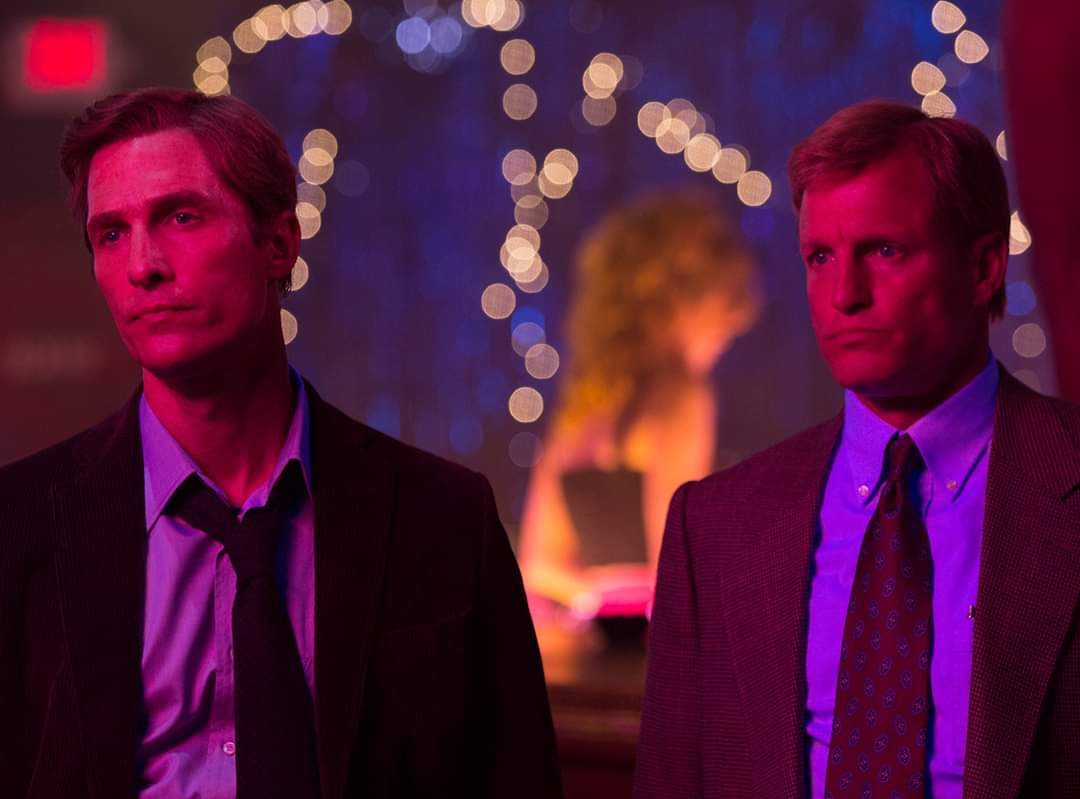
TV Writer Simone Salvatore reminisces upon the jaw-dropping first season of True Detective in spite of disappointing follow-up efforts
When the first season of HBO’s True Detective was released in 2014, it caused a splash in the TV landscape like no other, being instantly hailed as one of the greatest seasons of television ever made. It is perhaps somewhat disappointing then, that none of the series’ following three seasons have come anywhere close to matching its thrilling debut. Season Two was a near-incomprehensible disaster, littered with incoherent plotting and thinly-written archetypes in place of characters, whilst Seasons Three and Four, though exponentially better, seemed far too content with re-treading familiar themes and plot points rather than trying anything new.
However, while it is undeniably unfortunate that such a promising series failed to live up to its potential, the fact that Seasons Two-Four of True Detective pale so thoroughly in comparison to Season One perhaps speaks volumes about the latter’s brilliance.
One of Season One’s best qualities is its ability to subvert genre clichés in a way that keeps the audience guessing
The plot, though intriguing, seems at first glance like a fairly generic police procedural; Louisiana State Detectives Marty Hart (Woody Harrelson) and Rust Cohle (Matthew McConaughey) investigate the death of a prostitute named Dora Lange, who is found murdered outside a sugarcane field in a manner that indicates potentially satanic methods. However, one of Season One’s best qualities is its ability to subvert genre clichés in a way that keeps the audience guessing.
Take our two lead detectives for example; Marty is extremely laid-back and easy going, whilst Rust is a self-professed pessimist who finds his very existence (and that of the human race in general) morally reprehensible. At first glance, one would assume that this is simply rehashing the ‘buddy cop’ trope of having a contrasting relationship between a carefree layabout and a grumpy misanthrope, who over the course of the investigation grow to care for each other more until they become best friends.
The show isn’t interested in whether or not we like Marty and Rust or think that they’re good people, it simply asks us to understand them
However, this proves to be anything but the case. Not only do Marty and Rust not get along, they actively detest one another, and their relationship is primarily built on sheer disdain rather than any kind of camaraderie. This extreme contrast between their personalities leads to some incredibly entertaining interactions throughout the season (usually whilst on a long car journey), where McConaughey and Harrelson are able to showcase their electric onscreen chemistry. Even by the season’s closing episodes, though the two have seemingly formed a grudging respect for one another, they certainly aren’t “friends” in the same way that, say, Riggs and Murtagh are at the end of Lethal Weapon.
The show’s commitment to the duo’s dysfunctional relationship not only helps it stand out amongst a sea of similar “buddy cop” stories (something that was frustratingly lacking in Seasons Two-Four), but also shows a willingness to make the audience sympathize with what would otherwise be extremely unlikeable characters; the show isn’t interested in whether or not we like Marty and Rust or think that they’re good people, it simply asks us to understand them.
[its] movie-esque quality is carried over into the camerawork and lighting, which is dripping with atmosphere
Another aspect that makes the show so unique is that all eight episodes were all written and directed by the same two people; showrunner Nick Pizzolatto penned all the episodes, whilst Cary Joji Fukunaga served as the season’s only director. Such a practice is practically unheard of in major American dramas, where a season will usually be constructed by a team of writers and a revolving door of directors.
However, this tactic serves the series extremely well, as it enables all the episodes to maintain a more distinct visual style and a greater level of creative control than a typical season of television; the result is that Season One comes across more like an eight hour movie. This movie-esque quality is carried over into the camerawork and lighting, which is dripping with atmosphere and contains some truly awe-inspiring shots; an unbroken six minute one-shot in the fourth episode ‘Who Goes There’ remains one of the most visually impressive sequences ever put on television.
There have been many examples of shows that made a huge impression with their debut but failed to live up that standard in later seasons; Lost, Prison Break, Westworld, The Walking Dead, The Handmaid’s Tale, to name but a few. However, Season One of True Detective is a case where the debut season was such a perfect storm of the right cast and crew all coming together at the exactly the right time, that trying to make a worthy follow-up is a frankly pointless exercise. It’s no wonder that the show’s creators have spent all subsequent seasons trying (and failing) to meet the standard that it set.
Read more TV articles here:
Web Series Highlight: The Lizzie Bennet Diaries
Review: Percy Jackson and the Olympians
Comments